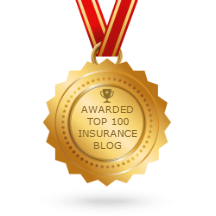Impact of non-communicable diseases on health insurance costs
Non-communicable, or chronic diseases (NCDs) were uncommon in the 19th century and became leading causes of death in the 20th century. Data from the World Health Organization shows that non-communicable diseases are responsible for 63% of all deaths worldwide in 2016. That’s 36 million people. In Singapore, 80% of all diseases reported were non-communicable.
The costs of treating chronic diseases are high, as they need to be treated continuously for a long period of time. To be sure, health insurance cost depends on many factors, and among them are whether you engage in risky behaviors that can lead to non-communicable diseases, or if you are already suffering from one or more chronic illnesses.
What are non-communicable diseases (NCDs)?
Non-communicable diseases – also known as chronic diseases – are those that derive from a combination of unhealthy lifestyle, obesity, and other environmental and genetic factors. They tend to be of long duration, need to be treated continuously, and often develop imperceptibly. Some of the most common chronic diseases are:
Different kinds of cancers are associated with different causes, but we know for sure that smoking tobacco, excessive drinking, poor diet, and lack of exercise are also among factors that cause cancerous cells to form.
High blood pressure and cardiovascular diseases are caused by a high-fat diet, lack of physical activity, high levels of stress, excessive alcohol consumption, and/or family genetics.
Diabetes is caused by a diet high in sugar, excess weight, and physical inactivity.
The two main causes of chronic kidney disease are diabetes and high blood pressure mentioned above.
Chronic Obstructive Pulmonary Disease (COPD) is mainly caused by smoking tobacco, but can also be caused by breathing in air high in particulate matter.
Other chronic diseases include for example Alzheimer disease, arthritis, obesity, and asthma, but also mental health-related diseases, such as depression.
It’s not uncommon for people to have more than one chronic diseases at once, as in many cases, one of the diseases results from having another.
Prevention rather than treatment
The great news is that NCDs are largely preventable. Many of the chronic conditions can be prevented by lifestyle changes, such as quitting smoking, replacing unhealthy foods with a healthy diet, exercising regularly, and controlling alcohol consumption.
In many cases, such as with diabetes or cardiovascular diseases, part of the treatment is a diet change. A healthy diet is considered to have a positive impact on your general health and may reduce the risk for heart disease, including heart attack and stroke. Eating a diet rich in vegetables and fruits as part of an overall healthy diet may also protect against certain types of cancers. The most recent food pyramid showcases a small shift in the recommended food types meant to be taken in; promoting fruits and vegetables as the group people should be consuming most often, and warning people away from consumption of processed meats more than once a week.
Regular exercise is proven to help you manage your weight and to have stronger bones, muscles, and joints, which can lower the risk of osteoporosis. Other benefits include reducing the risk of developing heart diseases and lowering your blood pressure and cholesterol.
There are a number of studies showing the negative effects of tobacco and alcohol on our body. While smoking cigarettes should be totally eliminated for a healthy lifestyle, occasional alcohol consumption within certain limits should not be considered too harmful to our bodies.
Healthy at work
Employees are the most valuable asset of every company, but there’s only as much an employer can do to keep its employees healthy. There are ways employers can promote a healthier lifestyle at work – for example by sponsoring or subsidizing a gym membership, providing fresh fruits at work, or organizing company sports challenges. Employers can also organize informative meetings or prepare special health information bulletins, and focus on educating their employees about the benefits of adopting a healthy lifestyle, and what a healthy lifestyle is really is.
As an employee, you should know what kind of health insurance benefits you can use. Check your plan documentation and see if you can do a yearly health check-up, or if your company health plan provides mental health benefits. These are important points to know about your employee benefits. While health insurance cost may lie on the employer side, healthy lifestyle choices depend on you.
How to minimize your health insurance cost?
Why focus on healthy living? Prevention is cheaper than hospitalization, and many insurers won’t cover the costs of treatment for chronic diseases. What’s more, the term pre-existing conditions usually refer precisely to non-communicable diseases and is the basis for excluding existing NCDs from insurance coverage. Insurers may offer an option to cover pre-existing conditions in some capacity, but this usually comes with a loading, which means your premiums will be considerably higher.
That’s because it’s expensive for an insurer to pay for the treatment costs of any of the major chronic diseases, as they usually require long-term therapies or expensive surgeries. When comparing plans or trying to renew an existing plan, your insurance provider will look at your current health situation and will calculate plan premiums based upon it.
Health insurance brokers, such as the insurance advisors from Pacific Prime Singapore, work with a number of insurers and can determine the best option for you while taking into consideration health insurance costs and your budget. Contact us for a free comparison of the plans that provide the best coverage for NCDs today, as well as a free price quote!
- 5 Things You Didn’t Know About Wasted Drugs in Singapore - October 10, 2023
- 10 Benefits of Going on a Staycation - August 28, 2023
- Non-monetary Employee Benefits: What Are the Advantages of a Good Workplace Design? - July 11, 2023






Comments
Comments for this post are closed.